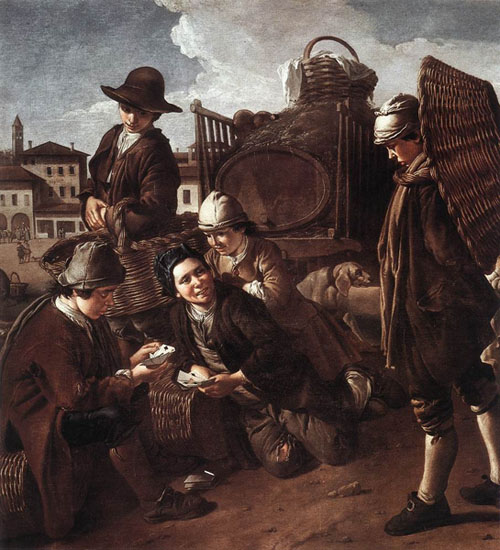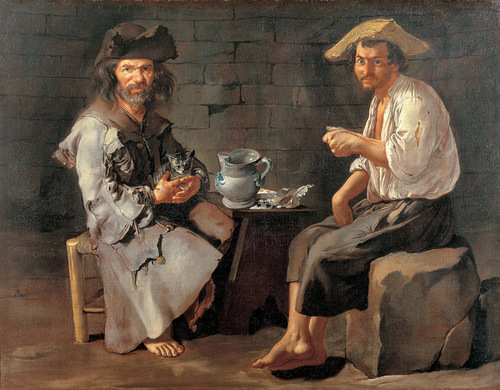Giacomo Antonio Melchiorre Ceruti (1698 – 1767)
Get a Ceruti Certificate of Authenticity for your painting (COA) for your Ceruti drawing.
For all your Ceruti artworks you need a Certificate of Authenticity (COA) in order to sell, to insure or to donate for a tax deduction.
Getting a Ceruti Certificate of Authenticity (COA) is easy. Just send us photos and dimensions and tell us what you know about the origin or history of your Ceruti painting or drawing.
If you want to sell your Ceruti painting or drawing use our selling services. We offer Ceruti selling help, selling advice, private treaty sales and full brokerage.
We have been authenticating Ceruti and issuing certificates of authenticity since 2002. We are recognized Ceruti experts and Ceruti certified appraisers. We issue COAs and appraisals for all Ceruti artworks.
Our Ceruti paintings and drawings authentications are accepted and respected worldwide.
Each COA is backed by in-depth research and analysis authentication reports.
The Ceruti certificates of authenticity we issue are based on solid, reliable and fully referenced art investigations, authentication research, analytical work and forensic studies.
We are available to examine your Ceruti painting or drawing anywhere in the world.
You will generally receive your certificates of authenticity and authentication report within two weeks. Some complicated cases with difficult to research Ceruti paintings or drawings take longer.
Our clients include Ceruti collectors, investors, tax authorities, insurance adjusters, appraisers, valuers, auctioneers, Federal agencies and many law firms.
We perform Giacomo Ceruti art authentication, appraisal, certificates of authenticity (COA), analysis, research, scientific tests, full art authentications. We will help you sell your Giacomo Ceruti or we will sell it for you.

Seated Errand Boy with Baskets, 1736
Giacomo Ceruti was an Italian late Baroque painter, active in Northern Italy in Milan, Brescia, and Venice. He acquired the nickname Pitocchetto (the little beggar) for his many paintings of peasants dressed in rags.

Women Working on Pillow Lace, 1720’s
He was born in Milan, but worked primarily in Brescia. He may have been influenced early by Antonio Cifrondi and/or Giacomo Todesco (Todeschini), and received training from Carlo Ceresa. While he also painted still-life paintings and religious scenes, Ceruti is best known for his genre paintings, especially of beggars and the poor, who he painted realistically, with unusual dignity and individuality.

Evening at the Piazza, 1730
Ceruti gave particular attention to this subject matter during the period 1725 to 1740, and about 50 of his genre paintings from these years survive. Mira Pajes Merriman, in her essay titled Comedy, Reality, and the Development of Genre Painting in Italy, observes that “Generally his figures do almost nothing—after all, they have nothing to do.” She describes his paintings as confronting us with the detritus of the community; the displaced and homeless poor; the old and the young with their ubiquitous spindles, eloquent signs of their poverty and unwanted labor; orphans in their orderly, joyless asylums plying their unpaid toil; urchins of the streets eking out small coins as porters, and sating them in gambling; the diseased, palsied, and deformed; lonely vagabonds; even a stranger from Africa—and all in tatters and filthy rags, almost all with eyes that address us directly.

Two Peasants
A characteristic painting is his Girl with a Dog, which portrays a rather plain subject sympathetically and without idealization. Like most of his figures, she appears before an undifferentiated dark background; when Ceruti attempted to represent deep space, the results were frequently awkward. His landscape backgrounds resemble stage flats and are often copied from print sources, such as the engravings of Jacques Callot. The realism Ceruti brought to his genre paintings also distinguishes his portraits and still lifes, while it is less apparent in his somewhat conventional decorative paintings for churches, including frescoes for the Basilica de Gandino and an altarpiece for Santa Lucia in Padua. This limitation is not unique to Ceruti; the Brescian painter from the late 1500s, Giovanni Battista Moroni, was similarly known for expressive portraits, and drab religious paintings.

The Laundress, 1736
Still wondering about an Italian painting in your family collection? Contact us…it could be by Giacomo Ceruti.
Reviews
1,217 global ratings
5 Star
4 Star
3 Star
2 Star
1 Star
Your evaluation is very important to us. Thank you.
